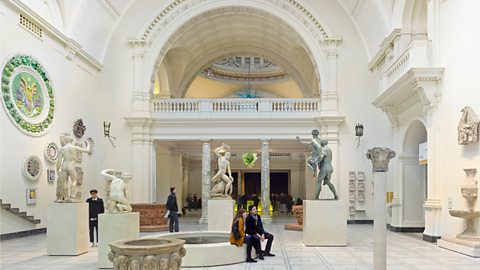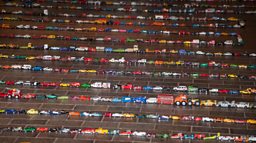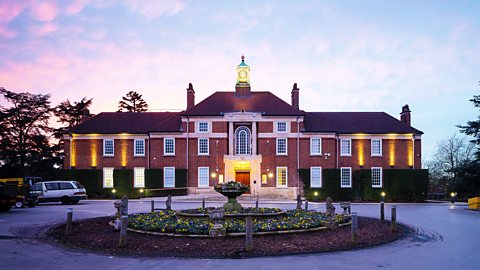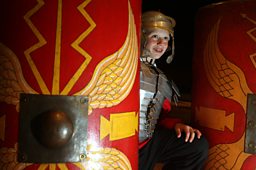12 weird and wonderful stories behind Britain’s best museums

We have around 2,500 museums in the UK, from huge institutions to tiny private spaces, and it's estimated that they receive 100 million visits annually. Every year, the Art Fund chooses a museum with “exceptional imagination, innovation and achievement” to be Museum of the Year and receive a £100,000 prize. 2017's shortlist can be found here and we'll be announcing the winner on Radio 2 on Wednesday 6th July. Ahead of the winner being announced, discover some of Britain’s best-loved and most unusual attractions with Emily Mackay’s list of fascinating facts and stories.
1. Some of them are very small
You don’t need a specially designed, cavernous building to open a museum - just an obsession and a lot of shelving. Robert Carter of Plymouth transformed his 6ft x 12ft garden shed into a maritime museum, cramming in hundreds of items including uniforms, pieces of eight and a captain’s hat from the Battle of Trafalgar. Another shed museum is the Museum of Victorian Science near Whitby, North Yorkshire. “A virtual visit to Dr Frankenstein’s laboratory” run by early electrics expert Tony Swift, visitors can see demonstrations of working, lightning-sparking vintage generators such as a Van Der Graaf, a Wimshurst machine and a Tesla coil. Over in Cornwall, meanwhile, a shed wasn’t small enough for Shanty Baba, who converted a 36 sq ft former bathroom in his home into a museum dedicated to the Victorian explorer Richard Burton, squeezing in 28 exhibits.
2. Others have an awful lot of stuff
If you think you have trouble keeping your possessions in order, spare a thought for the curators of Museum of the Year nominee the V&A and its 2.3 million objects. Then there’s the British Museum - a vast building, but one which only ever has one per cent of the museum’s eight million objects on display at any one time. In at number one, though, with a Noah’s Ark-troubling 80 million specimens, is the Natural History Museum. Its staff are currently in the painstaking process of digitising their collection, so that the world can access all the butterflies, birds, meteorites and slime moulds they might ever need.

Museum of the Year shortlisted: V&A
The V&A, London, shortlisted for the Art Fund Museum of the Year award, 2016.
3. They break all kinds of records
The National Motor Museum at Beaulieu in the New Forest holds the world record for the longest line of toy cars, with a 24,189-vehicle tailback created on 5 May 2014. That’s around two kilometres of Dinkys. The museum also has over 266 full-size cars, including Damon Hill's Williams-Renault FW18, Del Boy’s Reliant Regal and Chitty Chitty Bang Bang, plus displays on the history of the automobile, the motorbike, motorsport and British land speed record attempts.

4. Some of their exhibits are a little too lifelike...
There are many occult and uncanny objects at the Museum of Witchcraft and Magic in Boscastle, Cornwall, from charms and grimoires to hexes and scold’s bridles. One of them casts an even more convincing spell: emergency workers helping rescue the museum’s collection (the biggest hoard of witchcraft-related items in the world) after the 2004 Boscastle floods thought they’d discovered a body in the building, but were relieved to identify it as the museum’s waxwork witch, Joan. Prior to 1996, the museum had housed the genuine skeleton of Joan Wytte, a Bodmin woman accused of witchcraft, but her body was buried respectfully by new owners in 1998.
5. ...and some are actually aliiiiiiive!
In 1846, the British Museum was presented with two desert snails, which they duly mounted and displayed. Four years later, a member of staff formed suspicions that one of the two might not actually be an ex-snail, and soaked it in water. The snail revived and went on to live for further two years, setting a record for the longest a mollusc was held in suspended animation. Less terrifyingly, the relatively new - and Museum of the Year-nominated - gallery Jupiter Artland, at Bonnington House near Edinburgh, is currently showing From Here to Ear v.20, an evolving work by Céleste Boursier-Mougenot in which 40 zebra finches are set loose to fly around and perch on electric guitars and basses, plucking notes every time they take off and land, creating a random, ongoing sound piece.

Museum of the Year shortlisted: Jupiter Artland
Jupiter Artland, near Edinburgh, shortlisted for the Art Fund Museum of the Year 2016.
6. Not all museums are indoors
Nowadays there are many museums and galleries in which the exhibits are incorporated into the landscape, such as Jupiter Artland, Beamish Open Air Museum or the Yorkshire Sculpture park. The first open-air museum in the UK was the Highland Folk Museum, opened by Isobel F Grant in 1944 near Kingussie. The incorporation of its collection into a lifelike, immersive setting that evoked Highland history - including a replica Hebridean blackhouse - was groundbreaking. In the 1980s it moved to Newtonmore, and visitors can now see a working 1930s farm as well as a reconstruction of an early 1700s Highland township.
7. …and some are underground
The National Coal Mining Museum in Wakefield takes visitors 140 metres underground in the company of a former miner to learn about the history and day-to-day experience of the mining industry. The museum is built over a real coal mine, Caphouse Colliery, on the western edge of the Yorkshire coalfield. It was being worked as early as 1789, making it most likely the oldest coalmine shaft still in use.

8. Some museums multitask
At Headhunters in Enniskillen, Northern Ireland, you can peruse a collection of local railway memorabilia before or after a short back and sides or a shave: the museum is also a fully operational barber shop.
9. Art and history can work together
Bethlem Museum of the Mind in Beckenham, south-east London, is in the grounds of London’s oldest - and still working - psychiatric hospital. It was opened by Grayson Perry in March 2015, and as well as sobering exhibits on the history of mental health and its therapies such as straitjackets, a padded room and electro-convulsive therapy treatment, it houses a collection of art created by patients. These include the unsettling cat paintings of Louis Wain, and The Maze - a surreal depiction by Canadian painter William Kurelek of the hangups and complexes that can trap you within your own mind.

Museum of the Year shortlisted: Bethlem Museum of the Mind
The Bethlem Museum of the Mind shortlisted for the Art Fund Museum of the Year award.
10. London Bridge has a grisly secret
Close to the London Dungeons and the Clink Museum lie the even more evocative horrors of the Old Operating Theatre Museum and Herb Garret. You can see old medical instruments and learn about herbal medicine, before stepping into an 1820s operating theatre that was formerly part of the old St Thomas hospital site, rediscovered in 1956 and restored. The theatre is more like a contemporary dramatic theatre than a modern surgical theatre, and reveals the origin of the name in the banks of seats arranged around the operating table where patients consented to be operated on - without modern anaesthetic - in front of an audience in order to get the best treatment for less.
11. Not all museum animals are anatomically correct
South London’s Horniman Museum houses a diverse and curious collection of anthropological artefacts from around the world, as well as a huge collection of taxidermied animals. Sitting centre-stage in the middle of the museum’s main hall is an enormous walrus, who originated from the Hudson Bay area of Canada, but has been on display at the museum for over a hundred years. At that time, not many people had actually seen a live walrus, with the result that the Horniman’s specimen is rather overstuffed, lacking the animal’s usual heavy skin folds. It just makes him all the more lovable.

12. The Romans actually did quite a lot for us
The National Roman Legion Museum in Caerleon, Wales, has the biggest collection of Roman Legionary artefacts in the UK. It also holds the oldest piece of writing ever found in Wales, discovered down a well on the site of the museum - a former Roman fortress, one of only three permanent fortresses in Britain. You can also see the remains of a Roman amphitheatre and barracks, and try on replica armour.
